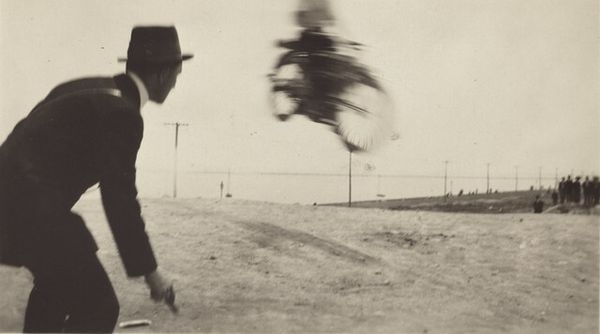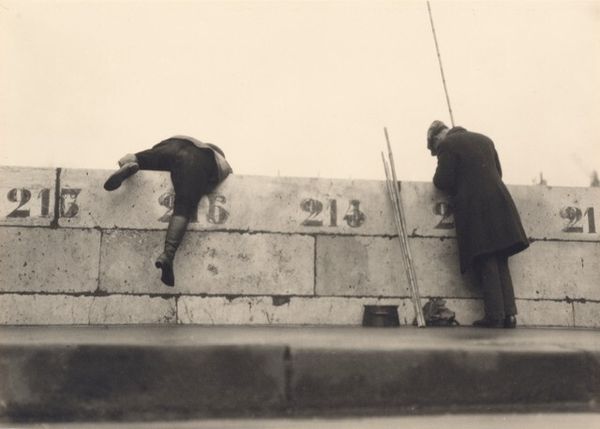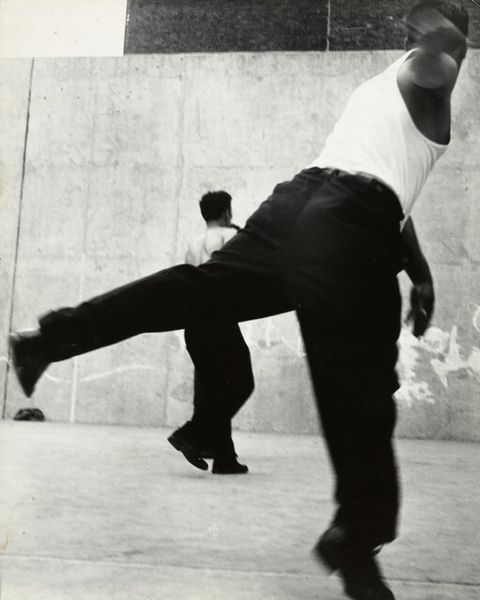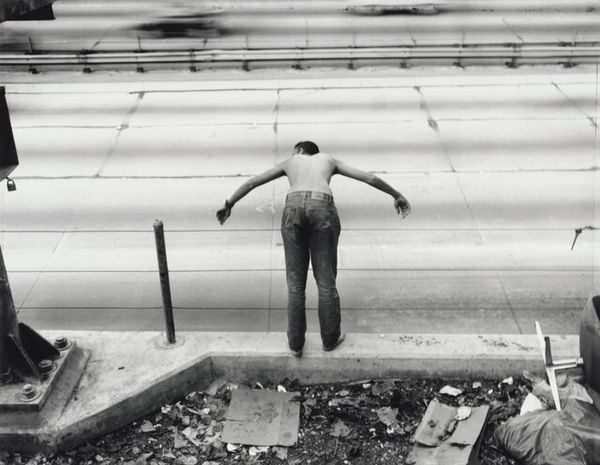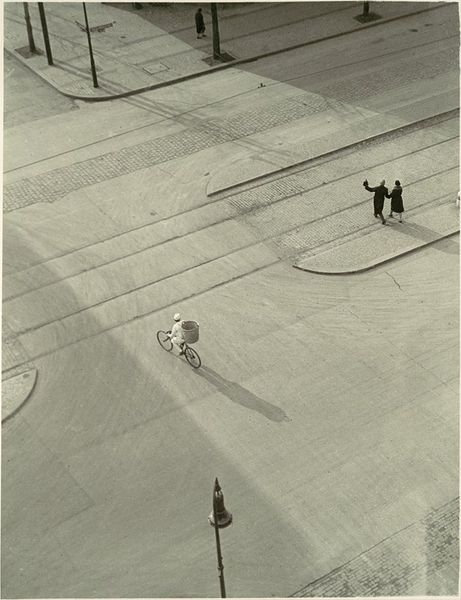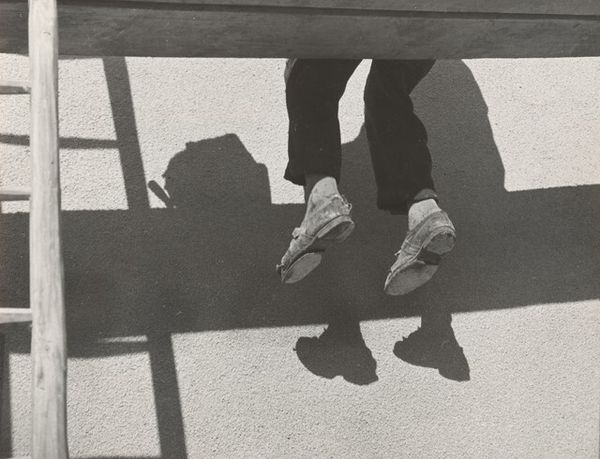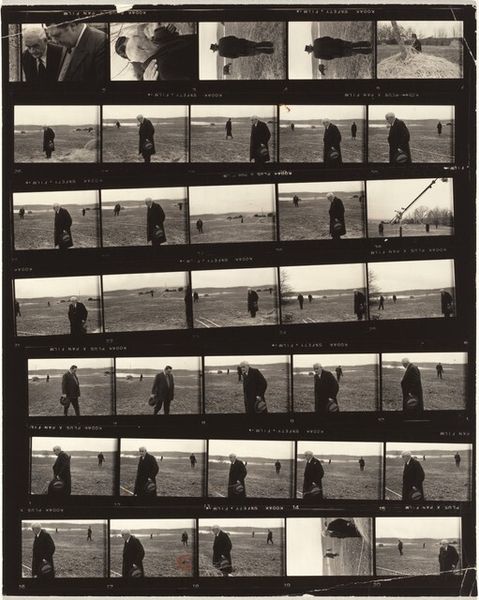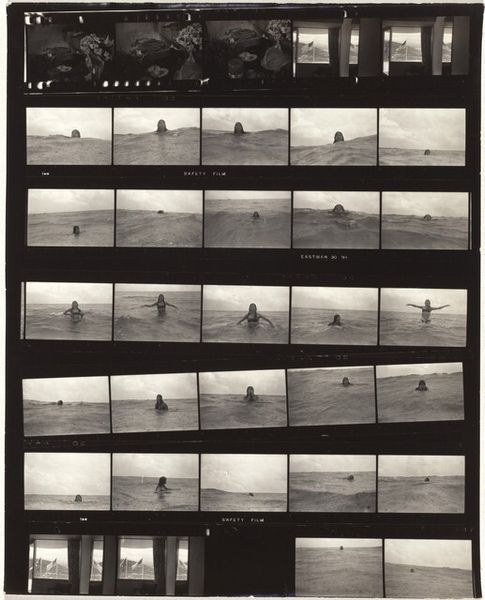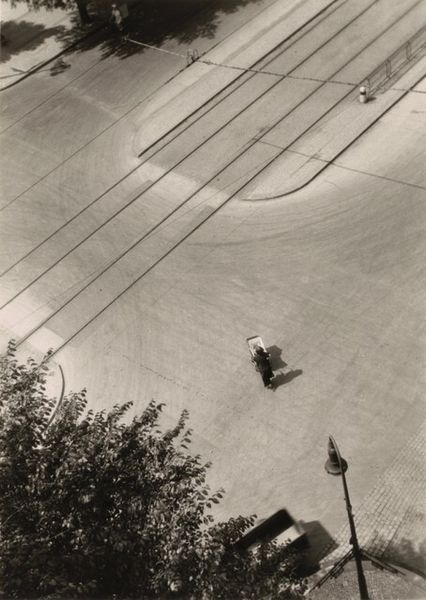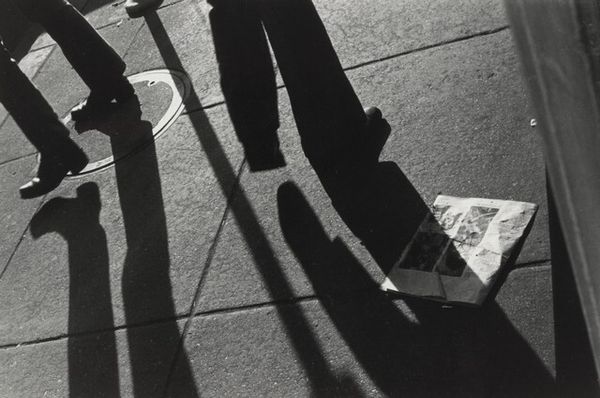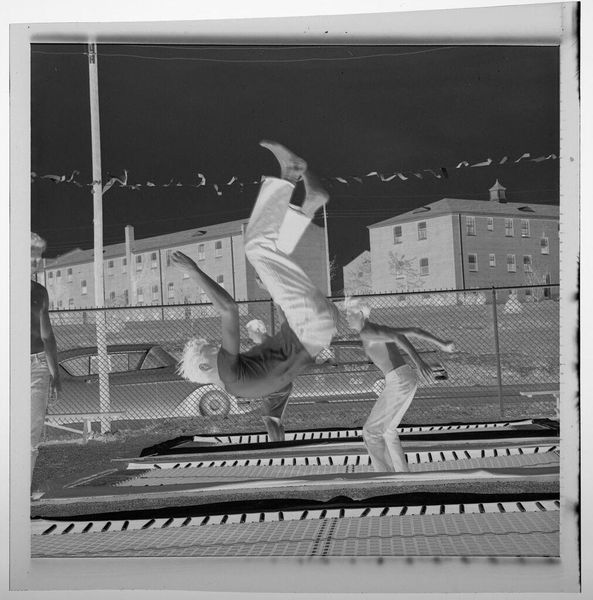
photography
#
black and white photography
#
landscape
#
street-photography
#
photography
#
black and white
#
monochrome photography
#
monochrome
#
monochrome
Dimensions: image: 38.42 × 56.9 cm (15 1/8 × 22 3/8 in.) sheet: 50.8 × 60.5 cm (20 × 23 13/16 in.)
Copyright: National Gallery of Art: CC0 1.0
Curator: Let’s turn our attention to Gilles Peress’s photographic print, possibly from 1979 or 1980, entitled "Road to Kurdistan." It's a compelling black and white street scene. Editor: Stark. The monochrome palette creates an immediate sense of unease. The high-angle perspective, the hurried figures... it speaks of displacement, doesn't it? The strong light seems to accentuate that anxiety, that feeling of exposure. Curator: Peress often immersed himself in regions experiencing intense conflict and political upheaval. His photojournalism documented human rights issues, especially ethnic conflicts and forced migrations. Understanding the potential time period helps. Consider what was happening in Kurdistan at the time. Editor: Exactly. You can't divorce the aesthetics from the political reality. The hurried steps of the figures, their very anonymity—are they fleeing? Searching? The composition seems to mirror the instability and precariousness of the Kurdish people. The sweeping curve of the road perhaps mimics the arduous journeys undertaken. Curator: What I find particularly striking is how the photograph captures the intersection of individual lives with these massive historical forces. Note the formal aspects of the photograph. He expertly balances light and shadow to create a sense of depth and tension, also managing a high vantage point with great aplomb. Editor: Agreed, and these elements amplify the political commentary. That lone figure, almost leaping across the road, casts such a long shadow... The weight of history, perhaps? Oppression looming large? It feels like Peress isn't just showing us a scene, but implicating us. What is our role in these events? Curator: His photojournalism often does force us to grapple with uncomfortable questions. Peress always situated his work within complex historical narratives. It's also worth considering the act of image-making itself in such politically charged contexts, its power, and potential implications. Editor: Absolutely. This photograph functions as more than just an image, it is a poignant reminder of human resilience and also a challenge to us to engage critically with the sociopolitical forces shaping our world. It becomes a form of visual resistance itself. Curator: Considering this moment and region is key to fully digesting what Peress offers. Editor: His composition makes that call resonate today. Thank you.
Comments
No comments
Be the first to comment and join the conversation on the ultimate creative platform.

